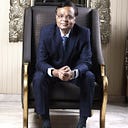THE ORIGIN OF REPUBLIC DAY IN INDIA
In our nation, the 26th of January is known as Republic Day. Our country’s constitution was formally established on this day in 1950, and India became a fully autonomous state. The Constitution, the country’s fundamental law, was created as a result of the dedication and hard work of great leaders like Mahatma Gandhi and the other freedom fighters who fought and lost their lives for our country’s independence. As a result, the 26th of January was proclaimed a national holiday and has since been recognised and honoured as India’s Republic Day.
● History:
India did not have its own official Constitution after independence; instead, its laws were based on modified colonial legislation. As a result, soon after independence, the Government of India’s most important responsibility was to create an official constitution for our own country. The arduous effort and struggle of the distinguished members of the Constituent Assembly, led by Dr. Rajendra Prasad, resulted in our constitution. Dr. Bhimrao Ambedkar is known as the “Father of the Constitution.” Our founding fathers drafted our Constitution after studying numerous constitutions from other countries. It is the world’s longest constitution. It exemplifies these great men’s passion and vision. That is how India’s Constitution came to be. The Constitution took two years, eleven months, and eighteen days to complete. Despite the fact that it was enacted and accepted by the constituent assembly on November 26, 1949, it only came into effect on January 26, 1950.
● Significance of 26th January
It is worth noting that January 26 was a pivotal day in India’s fight for Swaraj or Independence. On December 29, 1929, the Congress Session in Lahore passed a resolution stating Purna Swaraj (Complete Independence) as India’s objective. It was also agreed that the 26th of January will be celebrated as Purna Swaraj Day throughout India. On January 26th, 1930, India celebrated its entire independence for the first time. It was celebrated in this manner until 1947. August 15 became our Independence Day when we gained independence. The 26th of January, on the other hand, was still considered as a defining moment in India’s war for independence. As a result,everyone decided that January 26 should be chosen as the new Constitution’s commencement date. As a result, this day is commemorated with tremendous joy and pride as a national holiday, Republic Day.
● How is Republic Day celebrated in India?
All around India, Indians celebrate Republic Day with great excitement and happiness. The day commemorates India’s Constitution as an independent country. On Republic Day, schools and universities hoist the national flag. Across the country, cultural activities commemorating India’s battle for freedom are being held. At India Gate in New Delhi, the President of India hoists the national flag. The most prominent parade in New Delhi takes place in Rajpath. The parade is led by the Indian President and is organized by the Ministry of Defence. The event not only showcases India’s military might, but also highlights the country’s unique culture. Additionally , the ceremony honours those who have laid down their lives in the service of their country. India’s Prime Minister pays tribute to the martyrs by putting a ringlet on the Amar Jawan Jyoti at India Gate. A 21-gun salute, the national hymn, and the hoisting of the national flag complete the ritual. As a response, the Paramvir Chakra, Ashok Chakra, and Vir Chakra are awarded to the heroic troops. Children and regular citizens who have demonstrated courage in the face of adversity are also honoured.
Those who win a bravery award salute the President as a token of their gratitude. Then there is a display of India’s military strength. The military forces, police, and National Cadet Corps all participate in a march-past during which the President of India is saluted by these regiments. The celebration comes to a close as Indian Air Force fighter planes fly through Janpath. The Republic Day celebrations take place all around the country, but the largest is hosted in Delhi. Every year, millions of people across the world may watch the Republic Day Parade live streamed on the Internet. After the event, ‘video on demand’ is made accessible as a method to see the unique footage. The flag is also unfurled in state capitals, albeit on a smaller scale. In the states, the flag is hoisted by the Governor. The celebrations are held in a similar fashion in district headquarters, subdivisions, talukas, and panchayats.
Beating the Retreat, which takes place after all of the other ceremonies are done, is the formal finale to the Republic Day celebrations. The government buildings are brilliantly lit in shimmering lights from the 26th to the 29th. The beating retreat ritual takes place on January 29, the third day after Republic Day. Drummers conduct solo performances at the Drummer’s Call. The band enters, playing Saare Jahan Se Achcha, a classic martial melody. The National Flag is lowered and the National Anthem is sung at exactly 6 p.m., signalling the end of Republic Day celebrations.
In India, Republic Day is widely celebrated, and we should remember the long road to independence and the struggles of our forebears to change the country into a sovereign nation. It is a day for all Indians to honor the spirit of independence and to assist India in realising the ideals of its freedom fighters. Citizens are urged to show their patriotism and pride in observance of Republic Day. The students promise to be good citizens and contribute to making their nation a happier and more peaceful place to live.
www.pravinchandan.com
www.pravinchandan.in
